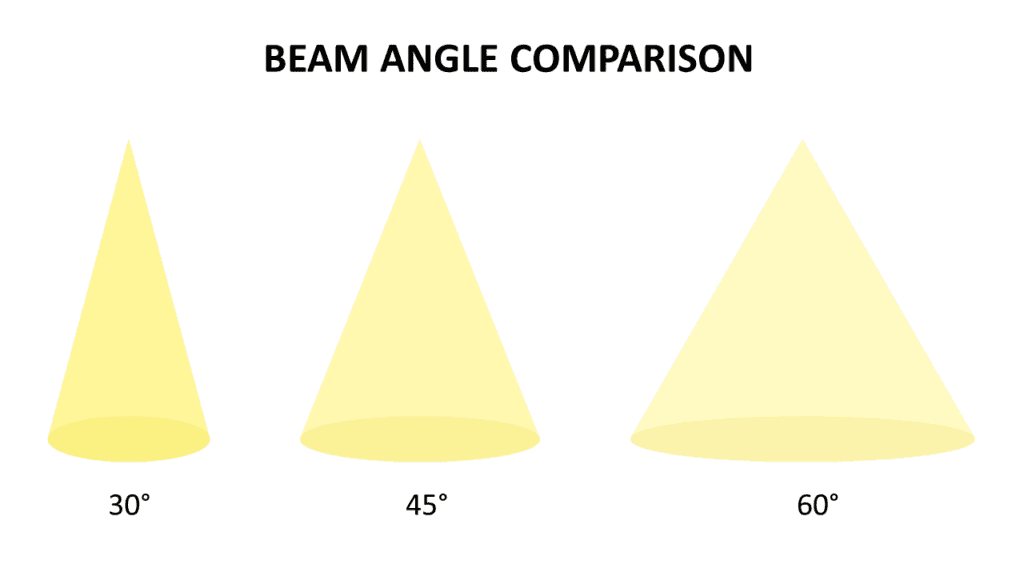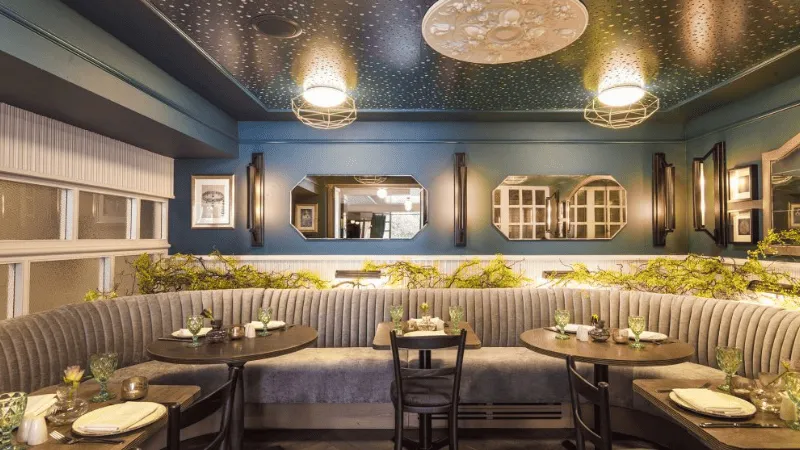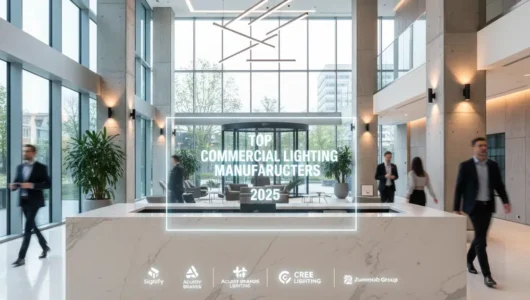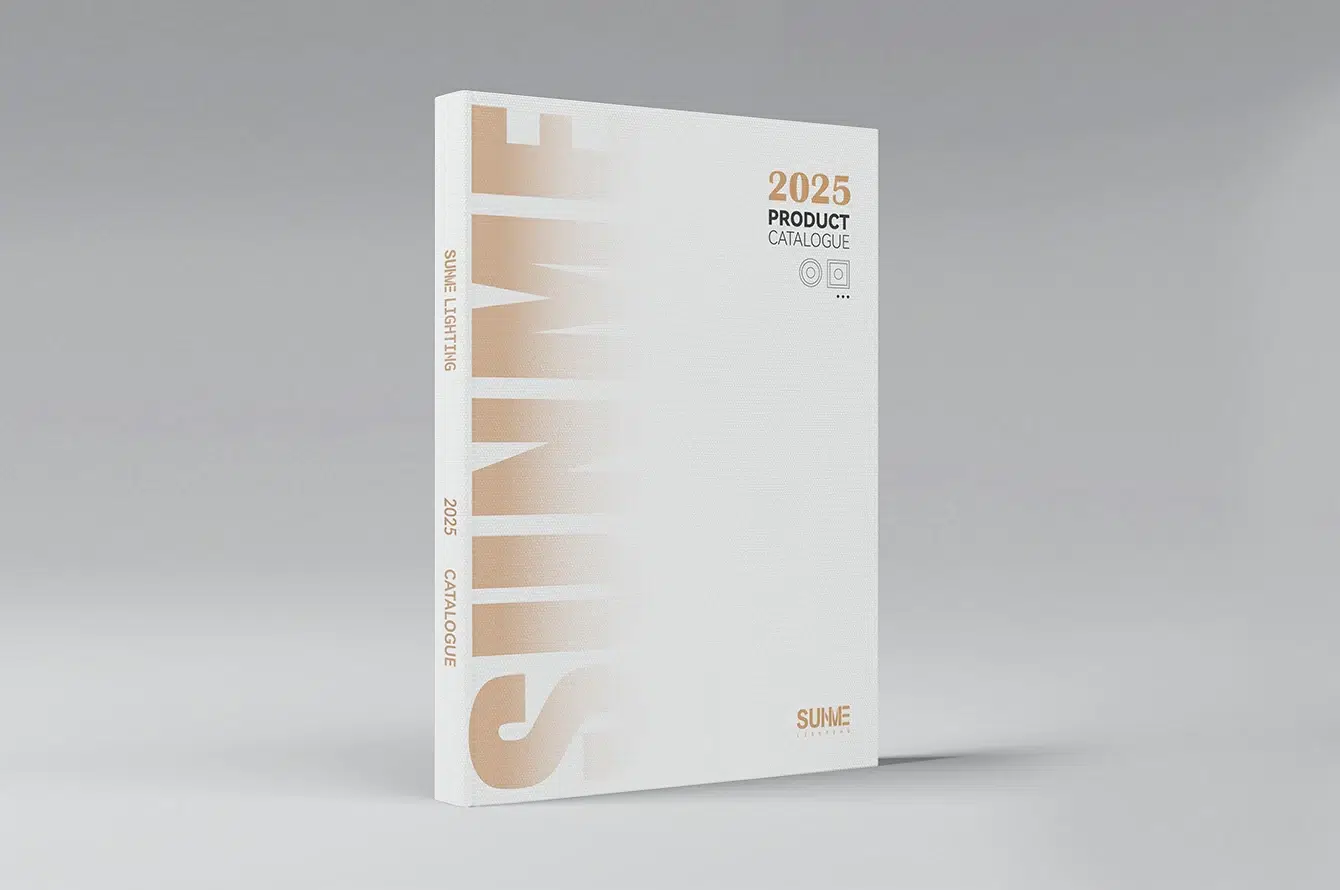Der Abstrahlwinkel ist ein einfaches Maß, das Ihnen hilft, die Lichtabdeckung in Ihrem Haus oder Gebäude zu optimieren. Jede moderne Beleuchtungsarbeit beinhaltet Berechnungen des Abstrahlwinkels und der Lichtverteilung. Der Abstrahlwinkel wird bei Beleuchtungsarbeiten häufig verwendet, aber nur wenige kennen seine Details und Verwendungsmöglichkeiten.
Hier ist ein detaillierter Leitfaden, der Ihnen hilft, alles über den Öffnungswinkel in Beleuchtung und wählen Sie den perfekten Abstrahlwinkel für Ihre Bedürfnisse.
Was ist der Öffnungswinkel?
Der Abstrahlwinkel misst die Streuung des Lichts einer Lichtquelle (z. B. einer Glühbirne). Je größer der Abstrahlwinkel ist, desto mehr Streulicht gibt es, aber die Lichtintensität ist auch geringer. Umgekehrt gilt: Je enger der Abstrahlwinkel, desto weniger Streulicht gibt es, aber desto höher ist die Lichtintensität.

Diese Lichtstärke wird in der Regel in Lumen gemessen. Lumen pro Quadratmeter werden als "lux" und Lumen pro Quadratfuß werden als "Fußkerzen." Die Gesamtzahl der Lumen, die für die Beleuchtung eines Raums benötigt wird, hängt von der Art der Leuchte und der Größe des Raums ab.
Beispiele:
1. Was bedeutet der Abstrahlwinkel 120?
120 bezieht sich auf den Winkel der Leuchte. Ein Winkel von 120° ist ein breiter Abstrahlwinkel für eine Glühbirne, die einen ganzen Raum abdecken kann, wenn die Decke hoch genug ist.
2. Was bedeutet "enger Abstrahlwinkel"?
Enger Abstrahlwinkel bezieht sich auf Glühlampen mit einem Abstrahlwinkel von weniger als 30°. Es gibt jedoch noch detailliertere Kategorien von Abstrahlwinkeln, wie z. B. den Spot-Winkel oder den engeren Abstrahlwinkel.
3. Gemeinsame Öffnungswinkel
Es gibt zwei Möglichkeiten, den Öffnungswinkel zu bezeichnen. Die eine verwendet Gradangaben, wie 10°, 60°, 120° usw. Die andere verwendet Begriffe wie enger Abstrahlwinkel, Spot-Winkel, breit, weiter Winkel usw.
Die Begriffe und Normen für den Abstrahlwinkel sind nicht allgemeingültig, aber die NEMA-Klassifizierung ist die am häufigsten verwendete. NEMA ist die National Electrical Manufacturers Association, der größte Verband von Elektrogeräteherstellern.
| Abstrahlwinkel (°) | NEMA-Typ | Beschreibung |
|---|---|---|
| 10° - 18° | 1 | Sehr schmal |
| 18° - 29° | 2 | Schmal |
| 29° - 46° | 3 | Mittel Schmal |
| 46° - 70° | 4 | Mittel |
| 70° - 100° | 5 | Mittelbreit |
| 100° - 130° | 6 | Breit |
| 130° oder mehr | 7 | Sehr breit |
Warum ist der Abstrahlwinkel so wichtig?
Der Abstrahlwinkel bestimmt die Lichtabdeckung; je größer der Winkel, desto größer die Abdeckung und umgekehrt. Um den Boden eines 40×40 Quadratmeter großen Raums vollständig abzudecken, bräuchte man eine 60°-Lampe, die auf eine 34 Fuß hohe Decke zentriert ist, oder zwei 60°-Lampen, die 10 Fuß von der Mitte einer 17 Fuß hohen Decke entfernt sind.
Richtig Die Berechnung der Lichtverteilung ermöglicht es Ihnen, eine vollständig beleuchtete Raum mit den wenigsten Einrichtungsgegenständen.
Licht mit niedrigem oder engem Ausstrahlungswinkel kann auch eine stilistische Wahl für Akzent- oder Stimmungsbeleuchtung sein.
Wie misst man den Öffnungswinkel?
Hier ist eine einfache trigonometrische Formel zur Berechnung des Abstrahlwinkels (Abstrahlwinkel).
Winkel = 2* Tan-1 [Strahlausbreitung / Lichtabstand]

Die Streuung des Lichtstrahls beträgt hier 50% der gesamten Lichtleistung; alles Licht außerhalb des konzentrierten Zentrums wird als "Streulicht" oder "Strahlenfeld" bezeichnet.
Der Abstrahlwinkel einer Glühlampe wird mit präzisen Instrumenten in einer kontrollierten Umgebung berechnet. Der Durchschnittsverbraucher braucht den Winkel nicht zu berechnen; er kann ihn auf der Verpackung der Glühbirne oder auf der Website des Herstellers nachlesen. Dieser Abschnitt dient nur zu Informationszwecken, damit Sie den richtigen Abstrahlwinkel besser verstehen.
Kriterien für die Auswahl des Abstrahlwinkels
Nachdem Sie nun die Bedeutung von Balken und den Unterschied zwischen engen und weiten Öffnungswinkeln verstanden haben, können wir zu den Auswahlkriterien übergehen. Um den besten Öffnungswinkel für Ihr Gebäude zu wählen, sollten Sie fünf Faktoren berücksichtigen.
1. Gebäudeart
Bei der Betrachtung des Öffnungswinkels gibt es zwei wichtige Gebäudetypen:
- Wohngebäude
- Kommerzielle Gebäude
Wohngebäude mit Fokus auf Gleichmäßigkeit Beleuchtung in jedem Raum. Daher ist eine breitstrahlende Leuchte in der Mitte des Raumes in der Regel ausreichend.
In Geschäftsgebäuden wie Restaurants oder Fabriken liegt der Schwerpunkt jedoch auf der effektiven Beleuchtung großer Bodenflächen. Sie benötigen Licht mit mittlerem bis engem Winkel, das über große Bereiche der Decke verteilt wird. In Restaurants geht es vor allem um Stimmungslicht und Akzentbeleuchtung.
2. Beleuchtungskörper
Beleuchtungskörper sind der zweitwichtigste Faktor bei der Wahl des Abstrahlwinkels. Eine Leuchte ist der Sockel der Lampe, der in der Regel an der Wand oder an der Decke befestigt wird. Sie kann auch eine Lichtquelle (Glühbirne oder LED) haben.
Leuchten können den Abstrahlwinkel einer Glühbirne verändern. Pendelleuchten verkleinern in der Regel den Winkel, während Einbaustrahler den Winkel vergrößern können.
3. Beleuchtungsarten
Je nachdem, wen Sie fragen, kann die Art der Beleuchtung variieren, aber traditionell gibt es drei Arten von Beleuchtung.
- Umgebungslicht - Diffuses Licht wird verwendet, um einen ganzen Raum zu beleuchten.
- Akzentbeleuchtung - Fokussierte und indirekte Beleuchtung ist normalerweise auf eine Wand gerichtet.
- Arbeitsplatzbeleuchtung - fokussiert und direkt Beleuchtung Highlights Arbeit Bereiche, wie zum Beispiel Schreibtische.
Die Umgebungsbeleuchtung erfordert einen breiten Ausstrahlungswinkel, während die Arbeits- und Akzentbeleuchtung einen engeren Lichtwinkel erfordert.
4. Höhe der Decke
Je weiter die Lichtquelle entfernt ist, desto geringer ist die Lichtintensität; je höher die Decke, desto schwächer ist die Beleuchtung auf Bodenhöhe.
Wohngebäude, wie z. B. Häuser oder Wohnungen, haben niedrige Decken, normalerweise 10 Fuß oder weniger. Daher benötigen solche Gebäude weitwinklige Leuchten, die den gesamten Raum ausleuchten.
Gewerbliche oder industrielle Gebäude wie Fabriken und Lagerhäuser haben hohe Decken, in der Regel über 25 Fuß. Diese Gebäude erfordern starke, enge Abstrahlwinkel und mehrere Leuchten, um den gesamten Bereich abzudecken.
5. Glühbirne Typ
Wir haben bereits über Leuchtmittel gesprochen, aber auch Glühbirnen können sehr unterschiedlich sein. Die gebräuchlichste Glühbirne, die jeder kennt, ist die birnenförmige A-Glühbirne; das ist die Glühbirne, die über Ihrem Kopf erscheint, wenn Sie eine Idee haben.

Glühbirnen des Typs A haben keine Richtung, daher werden sie mit Reflektoren versehen, um ihnen eine Richtung zu geben. Moderne Glühbirnen, vor allem LED-Glühbirnen, leuchten PAR, BR, und MR-Reflektor Hüllen.
Was ist der Unterschied zwischen PAR-, BR- und MR-Glühlampen?
- BR (konvexer Reflektor) = Abstrahlwinkel > 90°
- PAR (Parabolic Aluminized Reflector) = Abstrahlwinkel > 45°
- MR (Multifacetten-Reflektor) = Abstrahlwinkel 15° - 45°
Welchen Abstrahlwinkel sollten Sie wählen?
Schließlich haben wir alle Grundlagen der Ausstrahlungswinkel in der Beleuchtung behandelt und können nun damit beginnen, eine Auswahl zu treffen.
Die Wahl des Abstrahlwinkels hängt von der Lichtanwendung. Die beiden häufigsten Klassifizierungen von Beleuchtungsstilen und damit von Ausstrahlungswinkeln sind Wohn- und Geschäftsgebäude.
1. Trägerwinkel für Wohngebäude
Wie bereits erwähnt, haben Wohngebäude niedrigere Decken und kleinere Flächen. Wir können den gleichen Ausstrahlungswinkel für Häuser und Wohnungen verwenden, da beide aus Sicht der Beleuchtung sehr ähnlich sind.
In den meisten Häusern ist ein mittlerer Abstrahlwinkel (zwischen 40° und 60°) ausreichend, um einen Raum zu beleuchten. Der tatsächliche Abstrahlwinkel kann jedoch je nach den fünf oben genannten Faktoren leicht variieren.
Wohnzimmer sind größer als die meisten anderen Räume im Haus und haben oft eine Küche oder einen Essbereich. Für die Abdeckung des Wohnzimmers wird ein größerer Abstrahlwinkel (über 60°) empfohlen. Wohnräume brauchen auch nicht so viel Lichtso dass weniger Vorrichtungen verwendet werden können.

In anderen Bereichen des Hauses, wie z. B. in Treppenhäusern oder begehbaren Kleiderschränken, sollten Sie einen engeren Beleuchtungswinkel wählen; 25° ist ein Standardwinkel für Deckenhöhen von 9-10 Fuß.
Oft, Häuser und Wohnungen verwenden eine Vielzahl von Beleuchtungsarten Stile. Die Verwendung einer Vielzahl von Beleuchtungskörpern mit unterschiedlichen Ausstrahlungswinkeln kann visuell ansprechend sein. Durch Mischen und Abstimmen lassen sich auch Akzent- und Arbeitsbeleuchtung erzielen.
2. Trägerwinkel für gewerbliche Bauten
Geschäftsgebäude unterscheiden sich stark von Wohngebäuden. Schließlich gibt es mehr als eine Art von Geschäftsgebäuden. Zum besseren Verständnis haben wir gewerblich genutzte Gebäude in die folgenden Kategorien eingeteilt.
Einzelhandelsgeschäfte
Einzelhandelsgeschäfte haben ein Ziel für die Beleuchtung: um ihre Produkte ins beste Licht zu rücken. Ideal schmeichelhaftes Licht erfordert minimale Schatten und Blendung. Dies erfordert eine starke Umgebungsbeleuchtung, die das gesamte Geschäft abdeckt. Daher werden am besten enge Ausstrahlungswinkel und mehrere Lampen verwendet.
Zum Beispiel, Juweliergeschäfte verwenden enge Ausstrahlungswinkel von weniger als 10° in Vitrinen. Bei der Beleuchtung von Bekleidungsgeschäften hingegen werden für Schaufensterpuppen Abstrahlwinkel von 30° oder mehr verwendet.
Restaurants
Restaurants sind ein Ausreißer unter den Gewerberäume, weil sie sich auf Ästhetik und stimmungsvolle Beleuchtung konzentrieren. Da viele Restaurants nur abends bis spät in die Nacht geöffnet sind, vermeiden sie helle Umgebungen.
A Standard-Restaurantbeleuchtung Die Einrichtung verwendet einen Abstrahlwinkel von 25° für den Esstisch.

Ämter
In Büroräumen arbeiten viele Mitarbeiter an verschiedenen Orten, und eine schlechte Beleuchtung kann dazu führen, dass einige Mitarbeiter stark geblendet werden, während andere im Schatten sitzen müssen. Außerdem sind die Mitarbeiter arbeiten am Computerbildschirm können die Augen überanstrengt werden, wenn das Umgebungslicht zu schwach ist.
Daher sind Büroräume am besten mit einem breiten Abstrahlungswinkel, typischerweise um 60°, ausgestattet, während engere Abstrahlungswinkel nur für die Arbeitsbeleuchtung verwendet werden.
Lagerhäuser
Da Lagerhallen hohe Decken haben, sind engere Strahlungswinkel erforderlich, um die Intensität aufrechtzuerhalten, wenn sie den Boden erreichen. Die genauen Zahlen variieren je nach Deckenhöhe.
Praktische Beispiele für Strahlwinkel
Die nachstehende Tabelle beschreibt geeignete praktische Szenarien für verschiedene Abstrahlwinkel.
| Strahlwinkel | Wohngebäude | Kommerzielles Gebäude |
|---|---|---|
| Schmal | Kleine KüchenTreppenschränkeSchränke | Lagerhallen Akzentlicht für Waren Restauranttische |
| Mittel | EssbereichWohnzimmer | Bekleidungsgeschäfte Allgemeine Umgebungsbeleuchtung |
| Breit | AußenbeleuchtungGroße Räume | Umgebungsbeleuchtung |
| Sehr breit | Räume mit niedriger DeckeHochwasserbeleuchtung | Straßenlaternen |
Schlussfolgerung
Dies ist ein vollständiger, detaillierter Leitfaden zu den Ausstrahlungswinkeln der Beleuchtung. Wir hoffen, dass dieser Artikel Ihnen ein Verständnis für die Grundlagen vermittelt und es Ihnen ermöglicht, die Informationen in diesem Artikel bei der Auswahl der Beleuchtung für Ihr Gebäude zu nutzen.
Der Abstrahlwinkel kann eine entmutigende Größe sein, aber wenn man ihn einmal verstanden hat, ist er ein einfaches Konzept. Verwenden Sie einen breiten Ausstrahlungswinkel, wenn Sie einen Raum gut beleuchten wollen, und einen engen Ausstrahlungswinkel, wenn Sie einen Bereich hervorheben wollen. Natürlich sollten Sie sich nicht scheuen, eine Kombination von Ausstrahlungswinkeln zu verwenden, um Ihre ideale Beleuchtungsumgebung zu erreichen.
Wenn Ihnen die Auswahl des Öffnungswinkels jedoch zu mühsam ist, können Sie sich auf die Experten von RC Beleuchtung als Wegweiser Sie. Wir bieten eine breite Palette von Innen- und Außen Lichtlösungen für Wohn- und Geschäftshäuser.
Sie haben keine geschäftliche E-Mail? Klicken Sie hier!
Inhaltsübersicht
Sie haben keine geschäftliche E-Mail? Klicken Sie hier!




